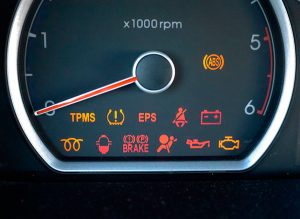 VEHICLE´S BREAKDOWNS MANAGEMENT
VEHICLE´S BREAKDOWNS MANAGEMENT
The organization has to design and implement policies for vehicle fleet operation, such as maintenance management, breakdown management, spare parts management, control and reduction of fuel consumption, tires management, prevention and reduction of traffic accidents, or the use of owned or outsourced workshops.
The organization has to write and establish the operations manual for the fleet’s vehicles concerning their maintenance, use, safety, fuel consumption, driving, and what to do in case of an accident or breakdown. This manual has to be given and explained to every driver and/or person in charge of the vehicle.
The goal of vehicle operations is that they operate the maximum time possible in order to meet the established service level, with the least possible variable operational costs.
Join to The Fleet Management Group
 In this group, you can know and share knowledge, experiences and meet people interested in Fleet Management over the world. Each week we publish posts, conferences, news, scientific papers, and technology related to Fleet Management.
In this group, you can know and share knowledge, experiences and meet people interested in Fleet Management over the world. Each week we publish posts, conferences, news, scientific papers, and technology related to Fleet Management.
The fleet management group
The organization has to implement a prevention and analysis system for breakdowns, because a breakdown causes several inconveniences. Some of the inconveniences are: not using the vehicle for a determined period of time, which stops the service performance; some costs such as the breakdown, the towing services, and the vehicle’s substitution; it could cause an accident, or that the vehicle doesn’t pass the technical inspection; damage to the organization’s brand image, and possible problems for the clients/users if the breakdown takes place when they’re using it.
To assure the vehicle’s safety and to prevent possible breakdowns the organization has to implement the following measures.
- Before and after a vehicle is used for service performance, certain mechanical and safety aspects must be checked, like the engine, tires, breaks, suspension, steering, mirrors and seatbelts. In order to do this, there must be a chart with all the things to do, and any defects and breakdowns will be written down. If the vehicle has a major breakdown or defect, it won’t be used. Once the vehicle has been used and there’s been an incident and/or breakdown, it’ll be written down in the chart and handed to the person in charge of the vehicle or the fleet manager, and a copy must stay in the vehicle so the next user knows the vehicle’s condition. The current defects and breakdowns in the vehicle have to be repaired immediately.
- In a vehicle fleet around 20% of the breakdowns in determined systems or components cause around 80% of the breakdowns costs (ABC analysis). These breakdowns are caused by diverse reasons like not doing maintenance at the right time and according to the manufacturer’s instructions; the inadequate use of the vehicles, failure in materials, deterioration, or poor designing of the components. For this reason these 20% of breakdowns need to be identified. The organization has to classify these breakdowns and their costs by system, such as motor, transmission, steering, body, lighting, etc. and these systems by subsystems. Once classified, they must be analyzed to know which ones are the ones producing these 20% of the breakdowns, their cause and establish preventive measures to avoid them.
For example if a component breaks down frequently, a solution would be to look for another supplier for it, or if there are breakdowns because the way the vehicle is driven, the best solution is to train the users/drivers.
Breakdowns in some cases are a factor to consider in the acquisition of some types of vehicles. If a vehicle were being used in urban areas with many stops while carrying heavy weight, to avoid breakdowns in the gearbox or problems with the clutch, a solution would be to buy vehicles with automatic transmission.
 I´m a Fleet Management expert, and the manager of Advanced Fleet Management Consulting, that provides Fleet Management Consultancy Services.
I´m a Fleet Management expert, and the manager of Advanced Fleet Management Consulting, that provides Fleet Management Consultancy Services.


